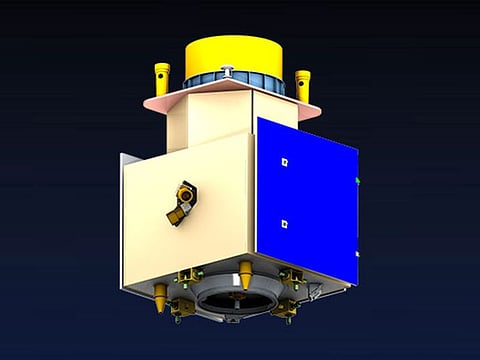Pakistan to launch new remote-sensing satellite
It will boost response to disasters, improve food security and environmental monitoring

Dubai: Pakistan’s Space and Upper Atmosphere Research Commission (Suparco) announced that the country will launch a new remote-sensing satellite on July 31 via China's Xichang Satellite Launch Centre.
Suparco emphasised the role of the new satellites in advancing scientific progress in Pakistan. “This marks a significant step in Pakistan’s space and scientific development,” the organisation said in a statement, as reported by Dawn news. The organisation added that the satellite will “enhance our ability to respond to disasters and improve food security and environmental monitoring.”
The satellite will play an integral role in planning for and assessing the effects of natural disasters such as floods, earthquakes, landslides, deforestation, and melting glaciers. This is an especially crucial tool for Pakistan, as the country continues to battle extreme weather events like scorching high temperatures and devastating floods, as experienced during this year’s monsoon season.
For instance, a satellite has the ability to monitor weather for early preventive alerts, create risk maps, provide real-time tracking during live weather events, and capture before-and-after images to assess post-weather event damage. In fact, the new satellite is expected to be equipped with advanced, next-generation imaging technologies.
Aside from environmental benefits, the satellite can also aid with infrastructure-related projects such as supplying geospatial mapping for the China-Pakistan Economic Corridor (CPEC).
Current roster
The new remote-sensing satellite is the latest addition to Pakistan’s many existing satellites. One of the pioneer projects of the country was the Pakistan Remote Sensing Satellite-1 (PRSS-1), which operates in Sun-Synchronous Low Earth Orbit (LEO). It was first launched in 2018, and all imagery from the satellite has been made available for free for academic purposes. Additionally, in 2025 the country launched another satellite, PAUSAT 1, developed by the Pakistan Air University, in collaboration with the Istanbul Technical University.
Pakistan also unveiled the country’s first indigenous satellite earlier this year, the PRSC-EO1. Launched in January 2025, this Electro-Optical satellite was manufactured entirely by local engineers from Suparco.
Pakistan Prime Minister Shehbaz Sharif also shared his remarks on the success of the EO-1 satellite. “From predicting crop yields to tracking urban growth, #EO1 is a leap forward in our journey towards progress. Spearheaded by Suparco , this demonstrates our nation’s growing capabilities in space science and technology,” according to a statement posted to his X account.
Overall, Pakistan’s growing developments in the space sector are broader efforts that correspond with the country’s National Space Policy and Vision 2047. The policy has many objectives, some of which include enhancing collaboration in the space world, utilising space technology to meet sustainability goals, and promoting local industry technologies.
Sign up for the Daily Briefing
Get the latest news and updates straight to your inbox







